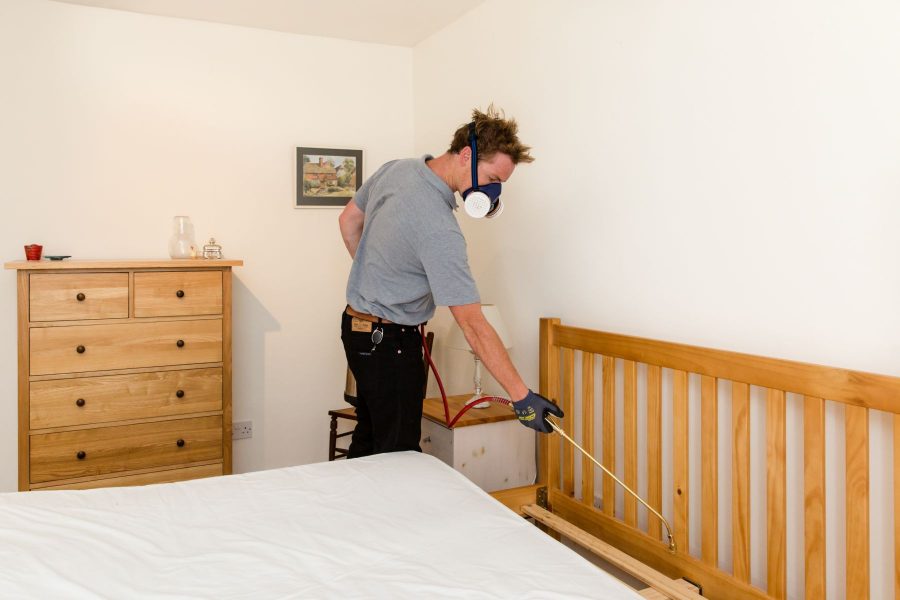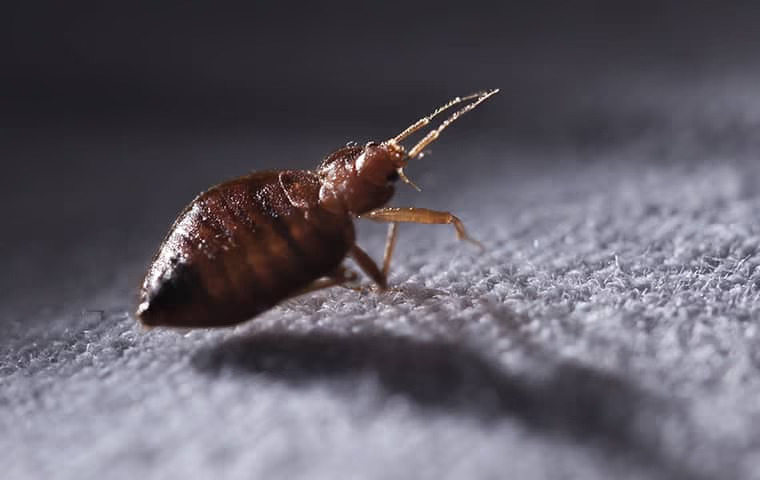King-size Bed Pest Exterminator Cincinnati: Pro Pest Solutions
King-size Bed Pest Exterminator Cincinnati: Pro Pest Solutions
Blog Article
Sorts Of Pest Control: Which Approach Is Right for Your Problem?
When faced with a parasite problem, the choice of an ideal approach for parasite control is important in properly taking care of the circumstance. From chemical treatments to biological services, there exists a series of methods that can be used to resolve different kinds of insects. Each method comes with its own set of factors to consider and advantages, making the decision-making process a nuanced one. Comprehending the nuances of each method and evaluating their compatibility with the specific bug invasion handy is crucial for accomplishing lasting success in pest management. By exploring the numerous types of parasite control methods readily available, individuals can make enlightened choices customized to their special scenarios, ensuring a much more effective and sustainable result in pest removal.
Chemical Insect Control
Chemical bug control entails the use of synthetic or naturally derived chemicals to handle and remove pest populations successfully. This technique is commonly utilized in farming, forestry, and residential setups to fight a vast range of pests, consisting of pests, rodents, and weeds. Using chemical pesticides can offer quick and targeted options to pest invasions, making it a preferred option for several individuals and companies.
One of the key advantages of chemical insect control is its capability to swiftly eliminate bugs, reducing the threat of damage to plants, residential or commercial property, and human wellness. By utilizing particular chemicals that target particular pests, this approach can successfully regulate problems while minimizing harm to helpful microorganisms and the setting when applied appropriately.
However, making use of chemical insect control also increases issues regarding possible unfavorable results on non-target species, water sources, and human wellness. It is vital to follow safety guidelines, use chemicals properly, and consider alternate bug control methods to minimize these dangers and guarantee sustainable insect management techniques.
Organic Insect Control
Organic pest control, additionally recognized as biocontrol, uses living organisms to minimize and take care of pest populaces normally. By making use of the parasite's all-natural killers or virus, biological bug control offers a environmentally friendly and sustainable service to pest monitoring.

Mechanical Insect Control
Making use of hand-operated and physical techniques to manage bug populaces, mechanical parasite control provides a different method that does not depend on using living organisms or synthetic chemicals. This technique includes making use of barriers, traps, or other gadgets to literally deter or eliminate pests. By obstructing bug entry factors or establishing up catches to capture Kings cincinnati pest control companies them, mechanical pest control can properly minimize invasions without presenting chemicals into the setting.
One usual instance of mechanical parasite control is making use of mesh screens on doors and home windows to avoid pests from getting in buildings. This easy yet effective technique functions as a physical obstacle, maintaining parasites out while permitting for correct ventilation. In addition, gadgets like mousetraps, fly swatters, and ultrasonic repellents fall under the mechanical pest control category.
While mechanical pest control approaches can be labor-intensive and call for regular monitoring and maintenance, they provide a eco pleasant and lasting remedy for handling bug infestations. By integrating various mechanical strategies, homeowner can create a detailed parasite control strategy that decreases dependence on chemical pesticides.
Physical Bug Control

Some typical physical bug control approaches include using barriers such as webs or displays to prevent insect entrance, traps to catch and eliminate insects, and hand-picking to physically remove insects from plants or frameworks. Furthermore, strategies like heat therapies can be used to control insects like bed insects by elevating the temperature level to levels that are lethal to the bugs.
Physical bug control is particularly helpful in incorporated parasite management (IPM) methods, where numerous pest control techniques are incorporated for reliable pest administration while minimizing the usage of chemicals. By utilizing physical bug control strategies, individuals can properly address insect invasions with marginal ecological impact.
Integrated Bug Monitoring
When applying physical insect control approaches as component of insect management strategies, Integrated Pest Management (IPM) emerges as an extensive approach that leverages various techniques to properly regulate pest populaces. IPM concentrates on long-lasting avoidance of parasites through a mix of organic, cultural, physical, and chemical devices tailored to particular parasite problems. By incorporating multiple control tactics, IPM aims to decrease the threats related to parasites while also decreasing dependence on chemical solutions.
One trick aspect of IPM is the emphasis on surveillance and examining pest populations to determine the most suitable control techniques. This positive method permits very early intervention and targeted strategies, resulting in more efficient insect administration. Additionally, IPM promotes eco friendly techniques by focusing on non-chemical control approaches and just using pesticides as a last hotel.
Conclusion

By using the parasite's natural predators or virus, organic insect control uses a ecologically pleasant and sustainable service to pest administration. - Kings Bed bug exterminator Cincinnati
Using manual and physical methods to manage pest populations, mechanical insect control offers an alternate strategy that does not depend on the use of living microorganisms or artificial chemicals.A reliable technique to handling pest populations without relying on chemical or organic approaches involves the usage of physical pest control strategies.When executing physical insect control methods as component of insect monitoring approaches, Integrated Pest Management (IPM) arises as a detailed method that leverages different techniques to successfully manage pest populaces. Chemical pest control entails the use of pesticides, biological insect control makes use of natural killers, mechanical bug control entails physical obstacles, physical insect control consists of trapping or eliminating parasites, and incorporated bug monitoring incorporates multiple methods for an alternative technique to pest control.
Report this page